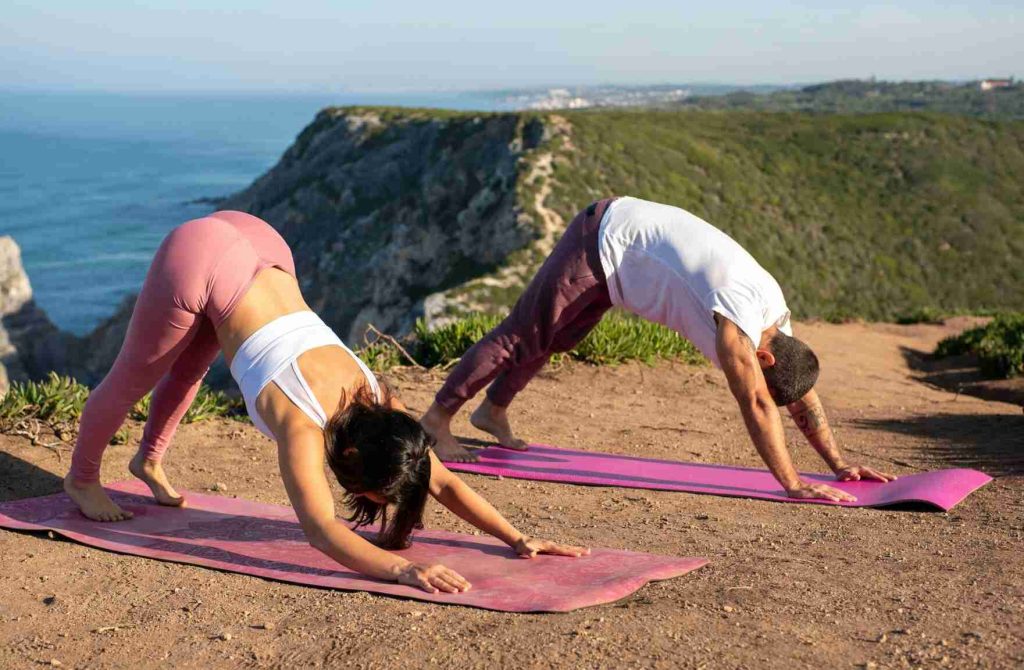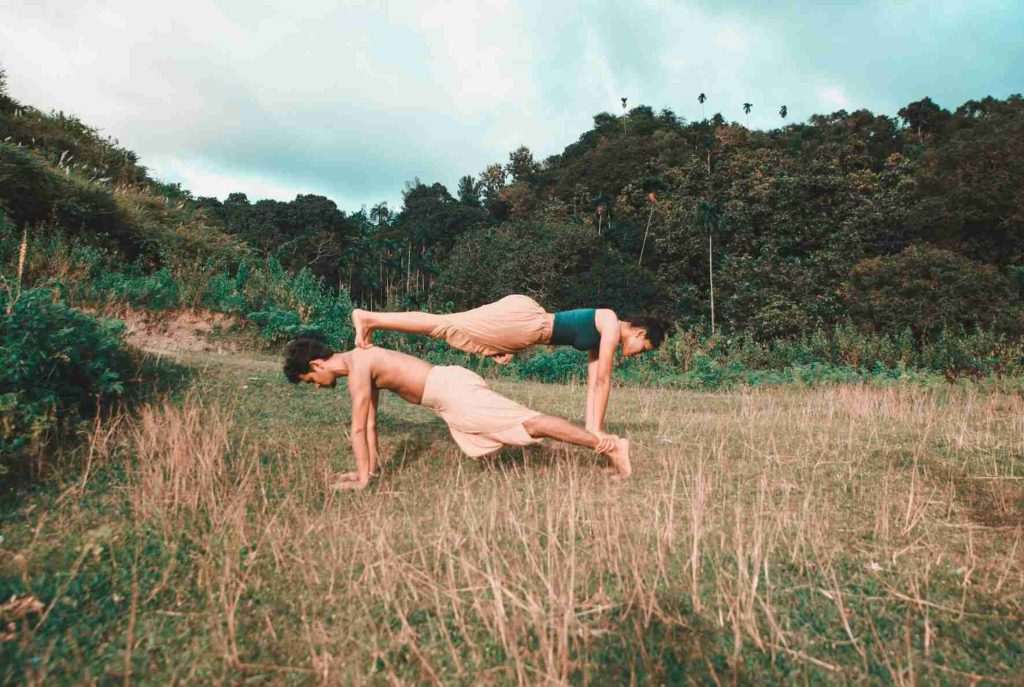In the search for physical and emotional well-being, yoga emerges as an ancient practice that offers numerous benefits, both for the individual and for interpersonal relationships. In particular, intimate yoga stands out as a bridge to deepen couple connection, facilitating a space of vulnerability, trust and shared harmony. This special approach to yoga not only improves flexibility and body balance, but also strengthens emotional bonds and communication between loved ones.
Through specific postures and practices, couples can discover a new level of intimacy and mutual understanding, strengthening their bond significantly. Meanwhile, in a different aspect of wellbeing exploration, there is a growing interest in understanding how personal companionship experiences, such as those offered by escorts in hyderabad, can influence emotional wellbeing and the building of more authentic and respectful relationships. This phenomenon underscores the importance of considering a wide range of practices and experiences in the search for personal and relational balance.
Strengthening the Connection through Breathing and Presence

Breathing, an act as vital as it is involuntary, becomes a powerful bridge to intimacy and connection in intimate yoga. This seemingly simple process becomes an extraordinary tool when practiced consciously as a couple, offering a means to attune not only bodies but souls as well. By focusing on breathing together, couples can experience a deep level of connection, transcending the barriers of verbal communication and environmental distractions. In this journey towards deeper connection, the presence of an experienced guide can be invaluable, especially in places where intimate yoga is gaining popularity, such as India, where qualified professionals can help couples explore and deepen their practice in a safe and respectful manner.
One of the most effective and fundamental exercises for synchronising the breath is the practice of ‘alternate breathing’, where one inhales while the other exhales, and vice versa. This exercise not only requires full attention and presence, but also mutual surrender and trust, as each must tune into the rhythm of the other, creating an invisible bond that unites them. Regular practice of this type of exercise can help reduce stress and anxiety, as the act of deep, controlled breathing is known to have a calming effect on the nervous system.
Presence is further magnified when couples incorporate direct gazing into their breathing exercises. Looking into each other’s eyes during these intimate moments can initially be challenging, as it reveals vulnerabilities and allows each person to see and be seen in their purest essence. However, this act of bravery fosters deeper understanding and mutual acceptance. In the safe space that intimate yoga creates, direct gazing becomes an expression of unconditional love and acceptance, deepening the emotional connection between participants.
Another vital aspect of strengthening connection through breath and presence is the practice of mindfulness or joint mindfulness. By focusing on the present moment, couples can free themselves from worries of the past and anticipations of the future, allowing them to fully enjoy and appreciate the here and now. This approach can transform everyday activities into acts of connection, where even the simplest gestures become charged with meaning.
Implementing these practices in daily life or as part of a yoga routine designed specifically for couples not only enriches the relationship, but also contributes to deeper individual well-being. Breathing and presence, therefore, are not simply parts of a yoga practice; they are mutual gifts of attention and care, pillars upon which a strong, harmonious and deeply connected relationship can be built. Ultimately, intimate yoga teaches that through breath and mindful presence, couples can access a form of communication beyond words, one where love, trust and understanding flow freely.
Shared Positions for Body Harmony

Intimate yoga offers a repertoire of shared positions designed to foster not only physical harmony between partners but also to strengthen their emotional and spiritual connection. Practising these postures together demands a combination of communication, trust and vulnerability, key elements for a healthy and balanced relationship. By exploring these positions, couples embark on a journey of mutual discovery, learning to adjust their movements and energies to create a perfect synergy.
One of the most iconic positions in intimate yoga is the Partner Tree Pose, a variation of the traditional Vrksasana that requires both partners to support each other to maintain balance. This pose not only improves concentration and physical balance, but also symbolises mutual dependence and support in the relationship. By holding each other, couples physically experience the importance of giving and receiving support, reflecting the emotional interdependence that characterises deep and committed relationships.
Another powerful posture is Shared Bridge, where one person assumes the Bridge pose (Setu Bandhasana) while their partner performs a variant of this position, leaning on the former. This configuration creates a space of trust, as the person at the base must hold their partner firmly, while the one on top surrenders completely, trusting the support provided. The metaphor of building bridges to each other, overcoming obstacles and differences, is powerful and reflects the essence of working together towards common goals in a relationship.
The positions shared in intimate yoga also include practices of adjustment and alignment, where partners help each other to deepen postures, correct holdings and encourage greater openness and flexibility. This interaction requires effective and sensitive communication, where feedback must be given and received with gentleness and respect. This process not only enhances the practice of yoga, but also teaches valuable lessons about how to communicate effectively in everyday life, especially in times of challenge or disagreement.
Through the practice of shared postures, intimate yoga teaches couples the art of cooperation, patience and mutual understanding. Each posture becomes an opportunity to explore and celebrate individual differences, while working together towards a common goal. This process of give and take, adjusting and aligning, not only benefits the relationship, but also promotes the personal growth of each individual.
In addition, practising these postures together allows couples to experience moments of joy and playfulness, breaking the routine and stress of everyday life. The laughter and fun that often accompany these shared yoga sessions are essential to keep the spark in the relationship alive, reminding couples that, although life can be challenging, there is always room for delight and connection in each other’s presence.
In short, the positions shared in intimate yoga are much more than just physical exercises; they are deeply meaningful practices that strengthen the couple’s bond, teaching and constantly reminding them of the importance of communication, mutual support and emotional connection. By taking time to explore these postures together, couples can strengthen their relationship, finding balance and harmony in both their bodies and their hearts.
